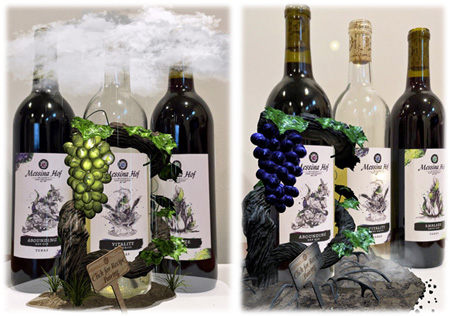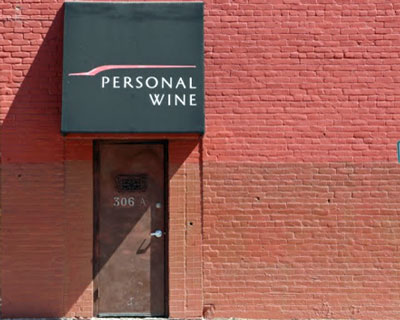
The Sip – Season One Shows Its Time to Go Texan or Go Thirsty
I exited the bright afternoon Austin street scene through a ruddy red door under a black awning. Not much else other than the 306A address on the door told me I was in the right place. As my eyes fought to handle the low light inside, I was met face-to-face by Ed Auler’s familiar face of Fall Creek Vineyard exiting followed by a voice inside that said, “Watch your step going down the stairs.”
The event was “The Sip: Season One” organized by Austin drinks blogger, media contributor and all around good PR guy Matt McGinnis and hosted at the Red Room Lounge while the tents and fences from the recent Austin Food & Wine Festival were still being disassembled. In The Sip, Matt organized a tasting of Texas wines from some of the best hill country wineries: Fall Creek Vineyards, Inwood Estates Vineyards, Perissos Vineyards, Pontotoc Vineyard, Sandstone Cellars, Spicewood Vineyards and Stone House Vineyards.
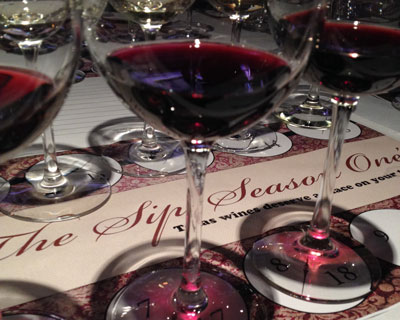
Inside the Red Room Lounge, the dim ambient light and red walls were background for an impressive array of glassware aligned in place settings on a long wooden table with crisp halogen lights directed down from above. The goal of the event was a blind tasting of Texas wines and similar non-Texas wines and to try to define the characteristics of those from Texas or other places around the world unencumbered by their labels. Joining the tasters were winemakers from each winery that included: Ed and Susan Auler and their winemaker Sergio Cuadra (Fall Creek), Dan Gatlin (Inwood Estates), Seth Martin (Perissos), Angela Moench (Stone House), Ron Yates (Spicewood) and Don Pullum (Sandstone Cellars and Pontotoc).
Prior to The Sip, I’d organized and participated in other blind tastings of Texas wines and found them to be the “great equalizer”. Once the wines were blinded, it was impossible for people to show their bias against Texas wines (Yes, many people still unfortunately have such bias). The good news is when asked to select the wines from Texas and those from other locales such as California, Spain, Italy or France sight unseen, it is actually very difficult. Yes, Texas wines have become that good!
In this case, Matt had organized flights of wines ordered from light and white to deep, dark and bold with an occasional non-Texas ringer inserted for good measure. During the reveal each winery representative in attendance reviewed their wines and, where applicable, the identity of the ringer.
There were some really good wines served that afternoon at Red Room Lounge. I was even surprised despite the fact that I’ve taste more Texas wine that just about anybody. Examples of Texas wines where I took special note were those poured by Fall Creek Vineyards: their Sauvignon Blanc and their new GSM blend (Grenache, Syrah and Mourvedre).
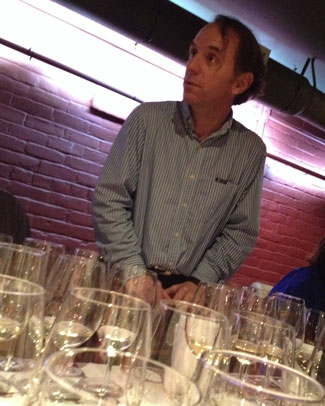
The Sauvignon Blanc was different, opening with exciting tropical notes of quince and guava yet distinctly varietal on the finish with crisp green notes. I admitted to winemaker Sergio Cuadra that this wine surprised me and asked him if it had a little hit of Viognier. His response was “No, it’s all Sauvignon Blanc from Mesa Vineyards near Fort Stockton.” The Fall Creek GSM was made from grapes grown at the Salt Lick Vineyard on the outskirts of Austin. It was dark, red-black in color and huge in dark fruit aroma, flavor and alcohol. It’s a great wine something worthy of sharing with friends over well-marbled Texas ribeye steaks. To show you how confident Sergio was, he poured his GSM adjacent to Perrin & Fils Châteauneuf du Pape Les Sinards from France consisting of a similar blend of grapes. It’s simply a great blend for Rhone Valley and for Texas, too.
Similarly, all of the Texas wineries in attendance showed wines that were worthy to be poured with those from better known regions made in similar styles. Dan Gatlin poured his Tempranillo Cabernet blend side-by-side with a Spanish Tempranillo blend (Numanthia, Tinta de Toro). I was able to pick them as similar with ripe red fruit augmented by dusty and smoky notes. However, I actually got it wrong which one was Texan and which was Spanish. They were that good and similar in character tasted side-by-side and blind.
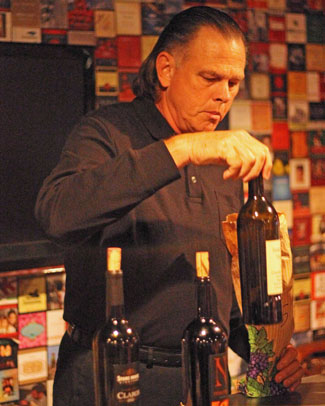
Seth Martin from Perissos brought his Roussanne blend and Ron Yates from Spicewood poured his Texas High Plains Viognier. Both were wonderfully floral and dominated by ripe stone fruits. Matt encouraged the tasters group to throw out descriptors and food pairings that ranged from honeyed duck to Thai soup with Kaffir lime.
Don Pullum provided both his Pontotoc Vineyard San Fernanado Academy Tempranillo blend and his Sandstone Cellars XIII (a non-vintage port-style wine) made with multiple Iberian grape varieties commonly found in true Ports. It compared admirably to Kopke 2003 Vintage Port from Portugal.
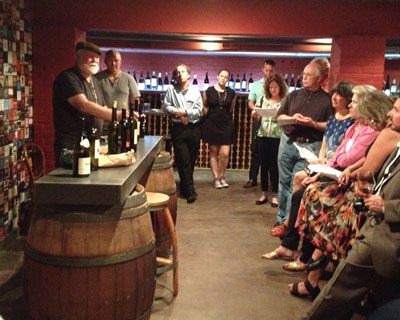
Angela Moench had perhaps the most unique offerings that included a red table wine and a port-style Scheming Beagle both made from Norton, a unique hybrid grape (from the Vitis Aestivalis family and a distant relation to our own Texas Lenoir grape also known as Black Spanish) more commonly found in Missouri than in Texas.
All in all, it was a great tasting and showcase for Texas wines. I love it when Texas winemakers have the courage to pour their wine side-by-side with well-known non-Texas wine that allows tasters to directly see how far Texas wines have come in quality. I also like blind tasting as it removes the bias we all tend to have with our “label envy”.
Thanks Matt for organizing this tasting and thanks to all of the winemakers that made these excellent wines and took the time to participate in this tasting. I’m ready and willing for season two.
Most of all, The Sip tasting revealed that it is now time for wine lovers in Texas to either “Go Texan” or “Go thirsty”!

